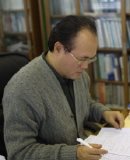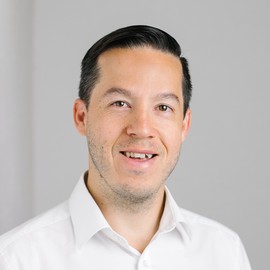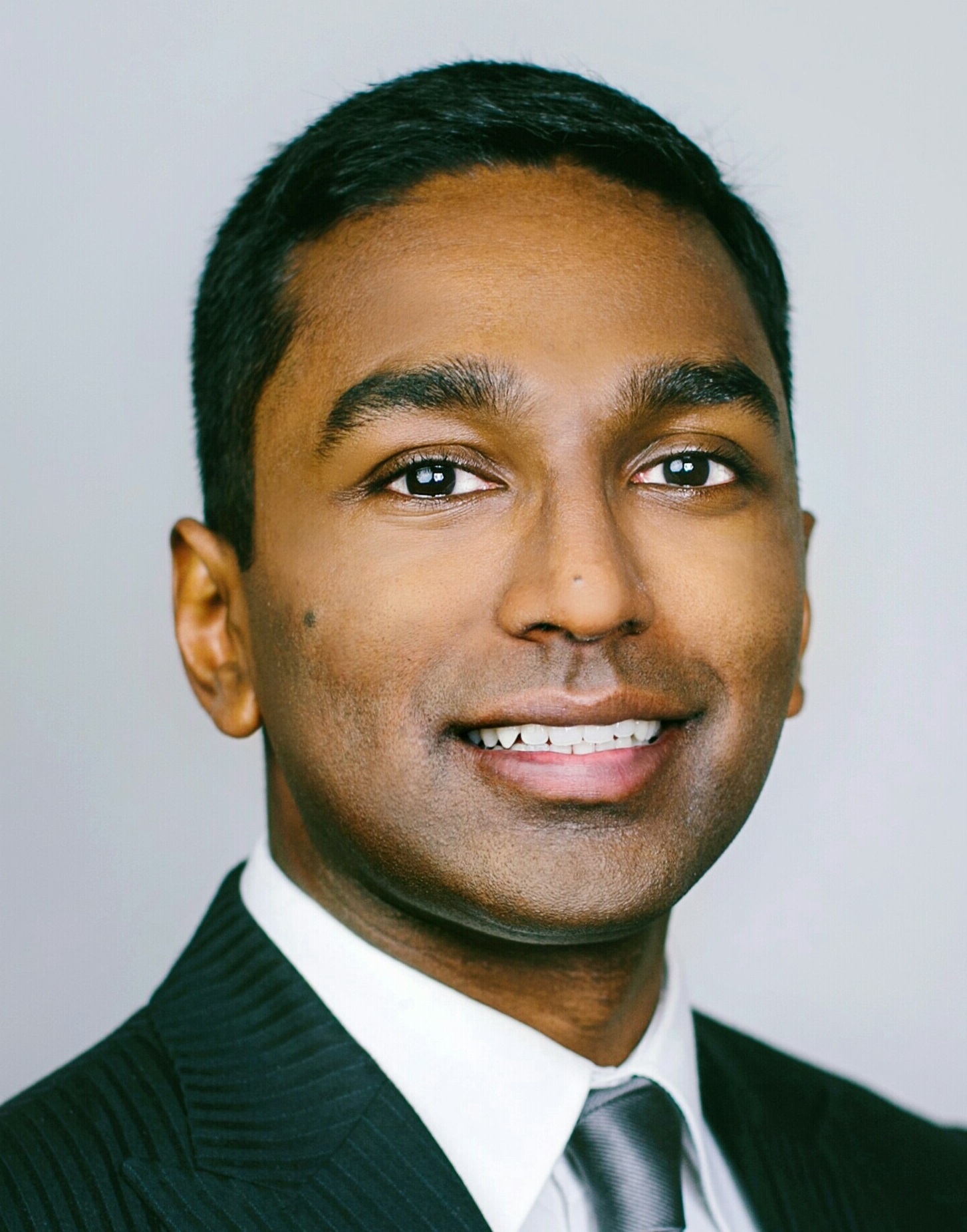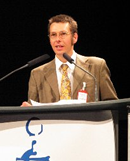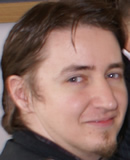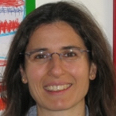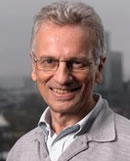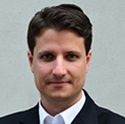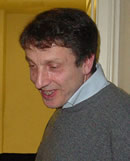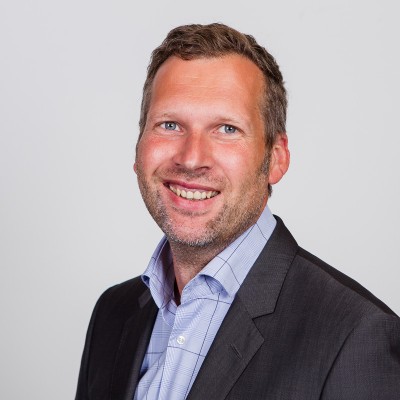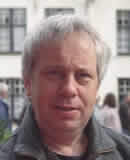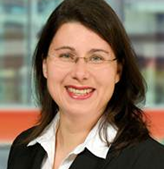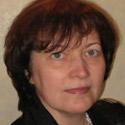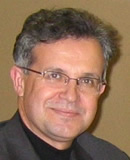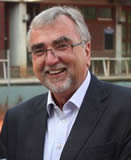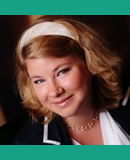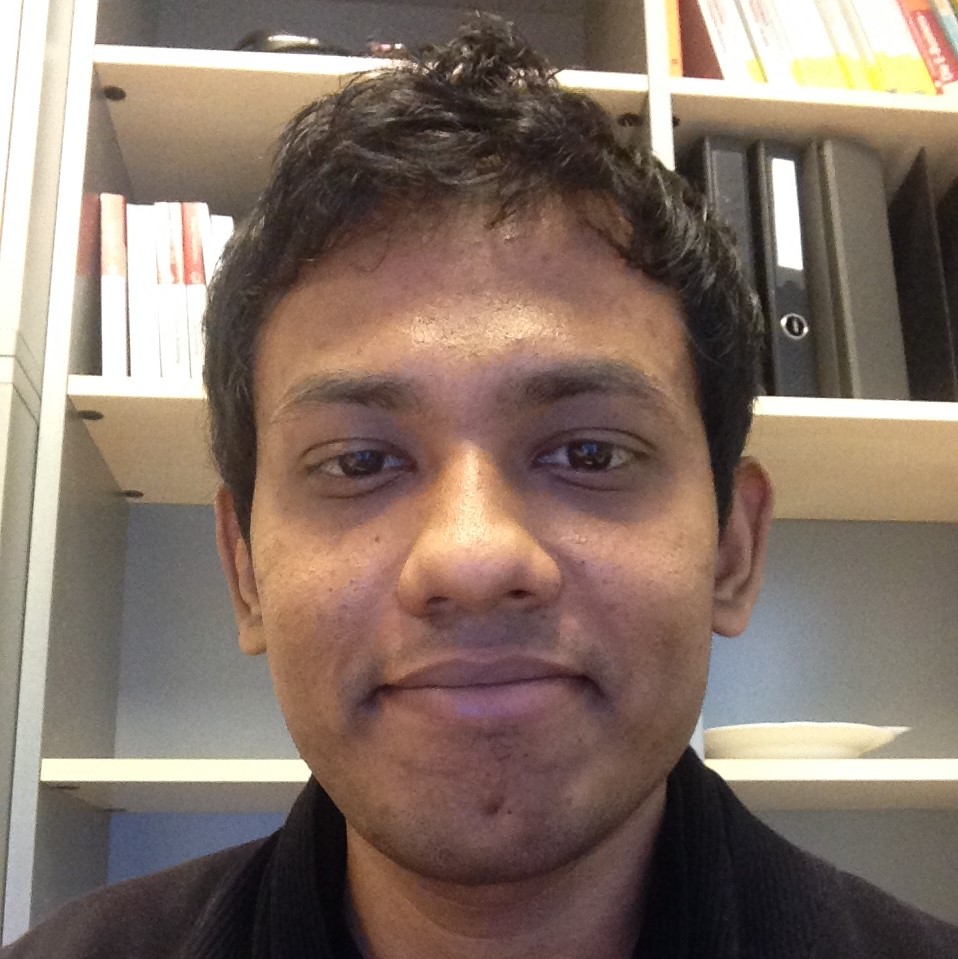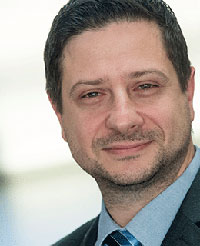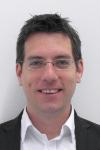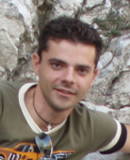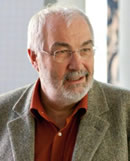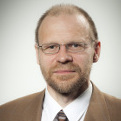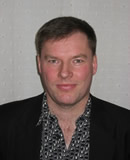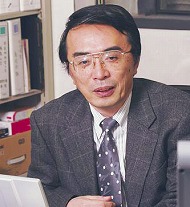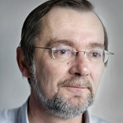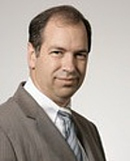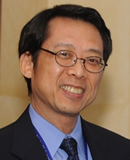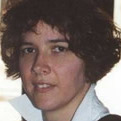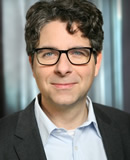Abstracts
Have a look at the lecture abstracts of this year's edition and explore the profiles of the presenters!
All times are UTC+2 (Vienna, CEST - Central European Summertime).
As software systems are used widely in every corner of our society, each software system to be developed and maintained gets larger and more complex than ever. Developing such software systems in a timely and cost-effective manner requires more careful analysis and modeling effort in order to reduce the total software life cycle cost. In addition to developing and maintaining such software systems, those large and complex systems developed separately need to be connected and work together to satisfy a common goal. We call such a system as System of Systems(SoS). An SoS consists of constituent systems, each of which is developed separately, but connected together to become a larger and more complex system. Some SoS examples are unmanned vehicles, military defense systems, health care systems, etc. In this talk, we would like to share with the audience, concept of the SoS, its characteristics, and modeling and verification issues for it. Depending on the type of the SoS, we try to model behavior of each and verify whether each can achieve the SoS goal quantitatively. We also introduce an attempt to model selfishness of each constituent system which abstracts behaviors of systems and verify the SoS level goal achievement.
Lecture at NEMO2017
Date/Time: Tuesday, July 18, 2017 at 16:00 UTC+2/CEST
A trend towards the acknowledgement of the benefits of domain-specific modelling methods – as a complement to general purpose and de-factor standard modelling methods like Unified Modelling Language (UML), and Business Process Modelling and Notation (BPMN) can be recognized. Consequently, researchers are confronted with the challenge of designing and deploying new modelling methods – in the following referred to as the conceptualization. A vital part of this conceptualisation is the design of the meta model. Meta models formally specify the syntactic backbone of a modelling language by introducing the relevant modelling language concepts and by constraining the meaningful relationships between them. Meta model design decisions dictate how modelling languages can be used by modellers during the modelling process. While lots of research can be found that focusses on the effect of notational aspects on modelling language’s usability and intuitiveness, guidelines and best practices for meta model design are still scarce. This talk will contribute bridging that research gap by focusing on meta model design patterns and their impact on their resulting modelling language and the modelling method as a whole. The goal of this talk is to provide, based on experience gained during the design of numerous meta models, a set of generic meta modelling patterns that can be employed in any modelling method conceptualization project. ADOxx will be utilized to show practical feasibility of the presented generic patterns on a state-of-the-art meta modelling platform.
Lecture at NEMO2017
Date/Time: Monday, July 17, 2017 at 16:00 UTC+2/CEST
The current industrial transition towards Factories of the Future (FoF) implies strong transformation of enterprise Business Models within the manufacturing sector. Product Service Systems are a key component of this transition, and contribute to renovate both the underlying enterprise models and the needs of enterprise engineering tools. The objective of the lecture is to articulate the overall needs of transition towards FoF with the requirements for innovative conceptual modelling approaches and new modelling methods and tools. The lecture will first give a synthetic insight on PSS within the context of FoF, to make possible for the audience to understand the key concepts of PSS and key industrial needs for developing innovative enterprise modelling and engineering solutions. The second part of the lecture will present an advanced modelling method dedicated to support PSS design and engineering. The meta-modelling procedure followed for these developments will be explained, together with the resulting PSS-oriented meta-model and a demonstration of the resulting modelling tool PS3M ‘PSS Scenarios Modeler’.
Lecture at NEMO2017
Date/Time: Tuesday, July 25, 2017 at 10:00 UTC+2/CEST
The interplay between ontologies and domain-specific conceptual modelling languages is typically concerned with the challenge of “ontological commitment” - i.e., the language is expected to have (or evaluated against) ontological qualities, in order to enforce coherence and consistency in model contents. This is a strong semantic coupling between modelling languages and ontologies. An alternative, weaker coupling will be promoted by this lecture, focusing on pragmatic semantic interoperability aspects: ontologies and modelling languages are treated here as distinct Design Science artefacts that may have some conceptual overlapping which allows applications to bridge the diagrammatic semantics with the ontological ones by resorting to technologies such as graph databases and the Resource Description Framework (RDF). The lecture will present results originally proposed in the context of the ComVantage FP7 research project and further developed in follow-up projects. A minimal yet illustrative implementation example will be discussed, leading towards a proposed vision of “enterprise model”-aware information systems.
Lecture at NEMO2017
Date/Time: Monday, July 24, 2017 at 10:00 UTC+2/CEST
Big Data technologies have rapidly achieved widespread adoption for many reasons, e.g., thanks to the versatility with which they foster innovative products by direct analysis of various user contents (e.g., tweets, blogposts, likes, pictures, etc.). However, designing and developing Big Data applications is still a considerable problem since: (a) it involves many side-costs the time spent on learning about and designing with the many big data frameworks; (b) it requires to balance out infrastructural and corporate governance costs with (non-trivial) development and deployment costs; (c) it most likely requires additional costs for the various trial-and-error experiments needed to match desired performance. We argue that a relevant part of said costs can be saved by tackling the design, development and deployment of Data Intensive Applications (DIAs) with Model-Driven Engineering (MDE) framed into a DevOps process. The purpose of this course/presentation is to show how MDE and DevOps have been applied to the design of Data Intensive Applications and to identify new research areas and issues.
Lecture at NEMO2017
Date/Time: Wednesday, July 19, 2017 at 11:30 UTC+2/CEST
A Supply Chain Service (SCS) is a complex network of interconnected business partners, including all the information, processes and assets required for the movement of goods and the performance of services. During the last decades, SCS has become a rapidly growing research area, studying the interactions and interrelations between heterogeneous systems, especially within the Industry Sector. Maritime Logistics and Supply Chain Services (MLoSCs) are typical industry SCS examples that include customs, shippers, maritime transport and port stakeholders. However, the smooth operation of an SCS could suffer from interruptions and delays due to a variety of reasons ranging from acknowledged business and financial factors (e.g. frequent changes in business partners leadership and demand uncertainty) to the exploitation of physical threats (e.g. bombing of a storage room) or cyber threats (e.g. gaining unauthenticated access to an alarm system and changing the alarm settings). Cyber threat exploitation results from the lack of implemented security controls, making the assets vulnerable to these threats. In the modern competitive digital maritime markets, where the provision of a SCS depends more than ever upon a multitude of interrelated cyber assets (e.g. networks, equipment, software and digital data), internal and external emerging cyber risks have become the main cause of a SCS disruption. By visualizing the processes of a SCS, one can identify the assets involved and their relationships and could help the various SCS business partners to better analyze the threats and their cascading effects within the SCS, thus preventing security incidents and making the right decisions to protect the SCS assets and properly provision the expected services. This lecture introduces a process-centric approach for modelling security concepts in MLoSCs in order to improve Supply Chain sustainability. We focus on the MLoSC Vehicle Transport Service (VTS). We present as a demonstration scenario, a business-process oriented model, which is developed via the ADOxx platform using the BPMN 2.0 specification. In this framework, three dominant maritime infrastructures have been modeled, namely the Port Community System (PCS), the Automatic Identification System (AIS) and the SCADA system. In order to show how security issues can be visualized in a MLoSC environment we apply simulation techniques on the developed process models. The three model infrastructures are component materials of the MITIGATE EU project, which has a goal the development of a platform that provides risk assessment techniques in critical maritime cyber assets aiming to manage risks that could compromise the organization’s information security.
Lecture at NEMO2017
Date/Time: Thursday, July 20, 2017 at 14:30 UTC+2/CEST
A strong focus of Software Engineering research in modelling is on software for models (e.g., modeling tools) as well as on models for software (e.g., in tool construction or reverse engineering). This talk gives a personal overview of models in Software Engineering, which started with early visual notations via a plethora of modelling languages and editors and lead to unifying approaches like UML (on the language side) and generic metaCASE software (on the tool side). In this era, foundational work on model representations, meta-modelling, constraint descriptions, and semantics as well as on classification of modelling languages into a few modelling paradigms provided a deeper understanding of the world of modelling in general. Adding the ability for code generation and model transformation, the process of software development was automated further by several environments, some of which even provide additional services like model evolution, model querying, model execution, or model comparison. Integrating these capabilities into a crossplatform and crosslanguage infrastructure may now lead to software components which contain code and models as equal-level and cooperating parts at runtime, making software evolution easier to handle and leveraging, e.g., the development of adaptive software or dynamic product lines.
Lecture at NEMO2017
Date/Time: Monday, July 24, 2017 at 09:00 UTC+2/CEST
In this talk an introduction to semantic-based modeling and the SeMFIS platform will be given. At its core, semantic-based modeling characterizes the use of semi-formal conceptual models together with formal semantic schemata such as ontologies, thesauri or controlled vocabularies. The talk will enable participants to understand the theoretical and practical foundations for applying semantic-based modeling to the design and analysis of information systems. In particular it will be reverted to the ADOxx-based SeMFIS platform that constitutes a flexible engineering platform for realizing semantic annotations of conceptual models and that is provided for free via OMiLAB (http://semfis-platform.org/). The approach will be illustrated with applications in semantic business process management, semantic-based simulation and semantic visualization of enterprise models.
Lecture at NEMO2017
Date/Time: Friday, July 21, 2017 at 16:00 UTC+2/CEST
In most industries, IT has become the backbone of the business. Therefore, the ability to conjointly analyze and design the action system of an enterprise and its information system has become a pivotal success factor or even a prerequisite for survival. Enterprise modelling aims at supporting organizations with this task. An enterprise model integrates models of the actions system (such as goal models or business process models) with models of the information system. This lecture gives an introduction to MEMO, a method for multi-perspective enterprise modelling. MEMO includes a high level framework of the enterprise together with a set of integrated domain-specific modelling languages. Among others, MEMO provides DSMLs for modelling organizational structures and processes, for goal modelling, and for modelling IT infrastructures. The introduction will include an overview of core languages and an outline of a method to use them for certain purposes. In addition, it is demonstrated how a modelling environment supports the construction and analysis of enterprise models. The participants are encouraged to use the tool, MEMO4ADO, which is available in the Open Models Laboratory.
Lecture at NEMO2017
Date/Time: Tuesday, July 18, 2017 at 14:30 UTC+2/CEST
Many businesses are actually networks rather than single enterprises. Examples include Netflix, Spotity, and Cisco Systems. All these companies operate an eco system that as a whole satisfy complex customer needs. Usually, the customer itself is also part of the network, as the customer co-creates some of the economic value itself. All the mentioned examples have in common that they employ rather complex information technology to employ their services and products. With e3value, we propose a business design approach that is model-based, and therefore assumes the same way-of-working common for information system, with the purpose to close the gap between business and IT development. In this presentation, we introduce the e3value method, along with case studies from industry. In addition, we will focus on the notion of ‘value co creation’; the idea that customers and suppliers jointly create economic value.
Lecture at NEMO2017
Date/Time: Thursday, July 20, 2017 at 10:00 UTC+2/CEST
Business Process Modelling (BPM) and Business Intelligence (BI) are two important areas in business informatics, which are treated, often rather separated from each other. Looking at the literature and the activities in the two areas shows that process modelling takes a look at the business from a more production and organizational oriented view, whereas business intelligence activities emphasize more the role of the customer in the business process. In this lecture we want to take a unified view onto these two approaches and show how BPM and BI support each other. For demonstration we use the activities of data understanding and data provisioning which are at the beginning of any BI activity. Due to the abundance of data on the Internet integration of traditional data sources and big data is a challenging task. We present a process model for data integration and show how this model can be realized using the ADOxx platform. The basic idea of the model is simultaneous processing of the data workflow and the associated workflow of the metadata which describe the data processing activities. Such a model supports better understanding of the data and extends traditional methods for accessing data quality.
Lecture at NEMO2017
Date/Time: Monday, July 24, 2017 at 14:30 UTC+2/CEST
We define Japanese creative services and discuss how they have been sustained successfully and its application to global service enhancement. There are many ``Shinise’’ (shops of long standing) service companies in Japan that are quite unique compared to the companies located in any other geographical region. They typically have anecdotal values based on nature and seasons, various types of culture, histories, and/or lifestyles. Several Japanese creative services are expanding their activities toward global markets. We explain the mechanisms of the sustainability and scalability of advanced cases of Japanese Creative Services. An key aspect of the mechanism is a communication between service providers and consumers based on sharing/interpreting/utilizing of tacit context in a community. For analyzing the key aspect, we propose the combined approach of sociology/anthropology, psychology, engineering and design thinking. We developed a meta-modeling platform for handling the combined analysis of the Japanese Creative Services. We believe that this kind of approach will contribute to creating new values within the field of service science and for value-added global services.
Lecture at NEMO2017
Date/Time: Tuesday, July 18, 2017 at 09:00 UTC+2/CEST

University of Applied Sciences and Arts Northwestern Switzerland FHNW, Switzerland
Modelling Knowledge Work is based on two principles: (1) the separation of business logic and process logic and (2) the support of both structured and unstructured knowledge. Case management is the management of long-lived, non-structured collaborative processes that require knowledge and information. The path of case execution cannot be predefined but depends on human skills and judgment. The OMG recently developed the Case Management Modelling and Notation (CMMN). The lecture will give an introduction into this modelling language. For real processes, however, there is no strict separation between structured processes and cases. The lecture will therefore show, how case modeling can be integrated with business process modelling in BPMN. Decision-aware business processes separate business logic from process flow, making process models simpler and easier to modify. This can be achieved by combining process modelling with decision modelling (e.g. using DMN).
Lecture at NEMO2017
Date/Time: Thursday, July 27, 2017 at 11:30 UTC+2/CEST
Enterprise models span all levels and perspectives of objects relevant to an enterprise, such as goal models, process models, data models, product models, network structures, interfaces, and so forth. Such models must be kept consistent with each other. The lecture proposes a constraint language that allows to formulate rules at an abstraction level that facilitates their automated re-use. We also discuss the mechanism that makes the elements of heterogeneous modeling languages related to each other and how we can use this view to plan the links between such modeling languages. The technique is applied to existing enterprise modeling approaches such as 4EM and Archimate to demonstrate the required effort. Practical examples and case studies use the ConceptBase metamodeling system.
Lecture at NEMO2017
Date/Time: Thursday, July 20, 2017 at 11:30 UTC+2/CEST
As the paradigm of enterprise modelling originally envisioned, a hybridization of modelling approaches is needed in order to cover the multiple facets of a business view, its context and requirements for different types of resources - including IT services and infrastructure. The “modelling method framework” [Karagiannis/Kühn, 2002] establishes key building blocks - i.e. the modelling language, the modelling procedure and mechanisms/ algorithms - to enable the required hybrid modelling and to increase the value of models beyond their traditional functions. As the importance of Next Generation Enterprise Modelling in the age of the Internet of Things, Industry 4.0, Industrial 3-D printing etc. increases, new modelling capabilities, semantically enriched design concepts and adapted operational functionality must satisfy evolving needs, in order to successfully manage not only the transformation in the digital enterprise stage, but also the adaptation and extension of existing services. In this context, the foundations of a „conceptual-model“-awareness approach for next generation enterprise information systems will be presented. This novel approach makes use of semantic networks to extend model-awareness towards arbitrary types of models that are developed for specialized communities aiming for domain-specificity (or even case-specificity) in their modelling language, therefore favoring productivity at the expense of reusability across domains. The technological space for capturing and bridging knowledge through model semantics is primarily based on diagrammatic models. Two categories of models are employed in this context: (1) Models of Concepts for describing a common understanding of a domain through its concepts and relations; (2) Models that use Concepts are typically domain-specific models based on some already established understanding of the domain. The hereby introduced life cycle of Agile Modeling Method Engineering - AMME [PCI2015] aims to apply the principle of agility established in Software Engineering (e.g., evolutionary development, flexible response to change) to the practice of Modelling Method Engineering. The main assumption is that a modelling method may evolve iteratively based on changing modelling requirements and feedback loops. Within the context of AMME, a full methodological approach is established by the OMiLAB (http://www.omilab.org), with a life cycle encompassing five phases: (1) create, (2) design, (3) formalize, (4), develop and (5) deploy/validate. The approach is supported, in its fast prototyping stage, by the metamodeling domain-specific language MM-DSL and the meta-modelling platform ADOxx (http://www.adoxx.org).
Lecture at NEMO2017
Date/Time: Monday, July 17, 2017 at 11:30 UTC+2/CEST
The digital journey is fueled by software and data. While system developers are enthusiastic about the potentials and ask for as much flexibility and agility as possible to create new processes and solutions, data protection officers and license compliance managers feel quite uncomfortable these days. The reason: Protection laws such as copyright law and data privacy law are to be fulfilled - even in times of digitalization. How can license compliance be achieved, when open source components are built in almost every software? How do cloud services comply with copyright law? Will big software vendors kill the initiatives of digitalization by auditing and suing incompliant software users? And what about the rights of the individuals to keep control over their personal data? Will the new European privacy regulation (EU General Data Privacy Regulation) bring along strategic disadvantages for European developers and IT services providers or will it be just the opposite? All these questions are currently under discussion. In the presentation apply a 360° view on software and data, examine the principles of copyright and data privacy and analyse probable consequences.
Lecture at NEMO2017
Date/Time: Friday, July 21, 2017 at 14:30 UTC+2/CEST
Current business process modeling approaches are well suited for showing the sequence of activities. They are less appropriate for reflecting information flows. However, in the context of information security, the reflection of information flows is an essential instrument for analyzing the way how information shall be organized with respect to the activity flow and enterprise architecture. Taking into consideration that security concerns not only technical devices and access rights in databases, the enterprise models that reflect organizational structure (including roles), technical architecture, information architecture, and relationships between aforementioned models are useful to identify and use different patterns that reflect the need for caring for security. The usage of the enterprise models also helps to identify methods for establishing the requested level of security. To illustrate how enterprise models can be used in caring for information security, several security requirements patterns, represented in BPMN, will be discussed focusing on the relationship between the information flow in the pattern and the corresponding enterprise architecture elements.
Lecture at NEMO2017
Date/Time: Wednesday, July 26, 2017 at 09:00 UTC+2/CEST
Ontologies and associated semantic technologies are rapidly becoming popular in various research fields. There is a tendency both in converting existing models into ontology-based models, and in creating new ontology-based models from scratch. The aim of this talk is to present the advantages and features provided by the ontologies towards achieving Closed-Loop Lifecycle Management or product-process systems. The essentials of building ontologies for Product Life Cycle (PLC) applications following the BFO (Basic Formal Ontology) principles will be presented together with examples of using ontologies in industrial cases.
Lecture at NEMO2017
Date/Time: Tuesday, July 18, 2017 at 10:00 UTC+2/CEST
Things in IoT behave like living things in real world. In order to understand the behavior of the things systematically, it is necessary to abstract the behavior in formal and collective patterns. In that perspective, this lecture presents a meta-modeling method to abstract the behavior in the patterns as follows. Firstly, the basic individual actions of the behavior are represented as movement actions in process algebra, called δ-Calculus, in a geo-temporal space, called GTS. Secondly, the actions of the things are grouped together in sequence as behaviours in ontology, called Behaviour Ontology, in an abstraction space, called n:2-lattice. In this way, the behavior of the things can be represented in mathematically structured patterns and be organzied hierachically in the collective patterns of the things. In the method, the requirements for the secure and safe behaviors will be specifed and verified using GTS Logic, and be represented as dynamic contraints in the lattice. Further the relations between the GTS space and the lattice space can be investigated. In order to show the applicability of the approach, an IoT example for Smart EMS (Emergency Medical Systems) Service will be used for demonstration on a tool, called SAVE. SAVE is a ptototype tool to specify, analyze, verify and evaulate distributed mobile real-time systems. It has been developed on ADOxx meta-modelling platform. At the end, the detailed architecture of the tool will be presented to show how effectively and efficiently the tool has been developed by using the basic facilities of ADOxx.
Lecture at NEMO2017
Date/Time: Wednesday, July 26, 2017 at 10:00 UTC+2/CEST
Ambient Assistance is a growing field in ICT: Based on smart sensors, life video analysis techniques as well as speech recognition human centred assistance becomes feasible and affordable. The range of applications is broad and covers everyday situations in private and business environments as well as support for people with special needs. Consequently, Ambient Assistance is a challenging field for computer scientists, software engineers and information technicians in both, research and application, with lots of questions to answer and technical solutions to find. Dealing with the support of humans, it is an interdisciplinary field affecting Psychology, Neurology, Medicine, Law, Philosophy, and others more. Models play a key role in ambient assistance systems as they act as the integral means for data and knowledge acquisition, representation, evaluation and exchange for the various system components. We will start our lecture with a short overview of already existing best practice examples and then work out the key notions and concepts that form the basis for domain specific modelling in this field. Based here on, we will discuss the objectives, concepts and elements of the “Human Cognitive Modelling Language” HCM-L, which was developed in the “Human Behavior Monitoring and Support” project HBMS. Deeper insight will be gained in the afternoon Parallel Working Groups that are headed by members of the Application Engineering Research Group: Dr. Judith Michael and Suneth Ranasinghe MSc.
Lecture at NEMO2017
Date/Time: Wednesday, July 19, 2017 at 14:30 UTC+2/CEST
The increasing demand of modern information systems to process and manage sensitive information and the introduction of relevant technological paradigms (e.g. Big Data, Cloud Computing, Internet of Things) has led researchers and industrialists to rethink the way that security (and its related issues such as trust, privacy and risk) is treated during the information systems development process. In the first part of this lecture, I will discuss the security modelling challenges, which are introduced in such complex systems, and I will outline the requirements that security modelling frameworks should fulfil. In the second part, I will present the foundations of a security modelling methodology, called Secure Tropos. From a theoretical perspective, I will describe its concepts, processes, and reasoning capabilities, while from a practical perspective I will present an ADOxx-based tool and some examples of how it can be used in practice.
Lecture at NEMO2017
Date/Time: Tuesday, July 25, 2017 at 14:30 UTC+2/CEST
Several languages have been suggested for modeling business processes. Practice shows, however, that a powerful modeling language alone is not enough. Users require guidance and assistance in the preparation of models, that is, during application of the language. In this course the students will learn the Horus Method. This method defines various stages of modeling and is a recipe-like guideline that has been proven in practice. In practical exercises to this lecture students will collaborate in a Web 2.0-based social network, to define business objectives, strategies and business processes together and will elaborate a common understanding of an organization.
Lecture at NEMO2017
Date/Time: Wednesday, July 26, 2017 at 14:30 UTC+2/CEST
A crucial success factor in information systems development is the alignment of the final software product with business goals, business semantics and business processes. Developers should be freed from programming concerns and be able to concentrate on these alignment problems. To assess that the right capabilities are used, sound Conceptual Modeling (CM) techniques within a Model-driven system development (MDD) must be applied in order to provide a structured and systematic approach to systems development, where developers can successfully use model transformation technologies to derive models of a lower abstraction level that can be further refined, even generating software code automatically. From the experience got with the use of advanced MDD platforms, this keynote will show how to use a Capability-driven Development (CDD) strategy in order to integrate business process modelling (BPM), requirements engineering (RE) and object-oriented conceptual modelling with the objective of leveraging MDD capabilities. The current state of the art on modelling methods and code generation tools will be discussed to explore different ways to match an information system with business requirements. Concrete principles, concepts and common practices of MDD will be presented with a special focus on model-driven requirements engineering, meaning by it how BPM and requirements models can be embedded in a complete CM-based software production process.
Lecture at NEMO2017
Date/Time: Friday, July 21, 2017 at 10:00 UTC+2/CEST
Nowadays, when reading management and IT journals, one inevitably crosses the terms of digitalization of businesses. The increasing digitalization of business processes as well as its penetration into ITbased service processes is in full motion. The afore-mentioned journals sometimes fall all over themselves by presenting news and business ideas, which seem to be enabled by digitalization. One should consider though that the wave of digitalization did not descend on us overnight. Rather, it is a process that is already on its way since years and it is keeping the IT departments of corporations busy. It is vital – especially for pioneering IT departments – to transform the corporations’ IT architectures and landscapes to allow for digitalizing business. Oftentimes, this is a long and painful process as the historically grown IT applications – such as e.g. ERP applications – have mostly not been designed for digitalizing a corporation’s business. Hence, a lot of conceptual and process work is needed before one should embark onto the journey of making a corporation’s IT architecture and landscape ready for digitalizing its business.
Lecture at NEMO2017
Date/Time: Thursday, July 20, 2017 at 16:00 UTC+2/CEST
The modelling of knowledge, action and time is a topic of current research within the broader domain of knowledge representation and reasoning. The course will focus on declarative approaches for modelling and reasoning with change, paying particular attention to the integration of knowledge and action (by means of artificial software agents). As time is inherent in any type of activity and process, the course will also deal with the representation of temporal properties that characterize the occurrence of actions and the knowledge they generate. Practical aspects of reasoning about knowledge, action and time in the context of agent-based systems, ambient intelligence and cognitive robotics will be exposed in addition to the theoretical frameworks. Students will also have the ability to conduct exercises with software implementing non-monotonic and event-based formalisms, in order to address reasoning problems involving aspects, such as constraint-satisfaction, commonsense reasoning and planning, cast in the context of ambient environments and cooperating intelligent agents.
Lecture at NEMO2017
Date/Time: Tuesday, July 25, 2017 at 09:00 UTC+2/CEST
Enterprise models are ussed to represent different aspects of / related-to an organisation / enterprise. Such enterprise models typically take the form of conceptual models expressed in terms of a more specialised, purpose specific, modelling language. For example, in terms of a goal modelling language, a value exchange modelling language, a business process modelling language, or an architecture modelling language, etc. In general, such modelling languages, force modellers to “reduce” the models to mere boxes-and-lines diagrams, where it is left to the names in / on the boxes to provide a linkage to semantically richness, and nuances, of the domain being modelled. In this lecture, we discuss the strategy to ground enterprise models in purpose / domain specific languages on top of a conceptual model expressed in a more generic domain modelling language, where the latter allows modellers to include richer verbalisations of the concepts and their relationships. This will be illustrated in terms of example models in the ArchiMate language, while grounding these on models expressed in the well known fact-based modelling language ORM.
Lecture at NEMO2017
Date/Time: Wednesday, July 19, 2017 at 10:00 UTC+2/CEST
The basic notions of the NEMO summer school include the terms of enterprise modeling, modeling methods, etc. We start with some general observations about those notions and their role in (business) informatics. The second part of this contribution is dedicated to foundations of conceptual modeling. Here we pose the question of what the very basics of (discrete) models are, and how a systematic setting of modeling techniques, in particular for enterprise models, may be achieved. A business process is usually composed of workflow. A reasonable workflow is sound: a sound workflow can always reach its terminal state, and upon termination, no “garbage” remains. We present methods to adequately model and analyze workflows, in particular a most liberal composition operator for workflows that preserves soundness (i.e. composition of two sound workflows is a sound workflow again). This allows to stay in the world of sound workflows during the construction of large workflows and business processes.
Lecture at NEMO2017
Date/Time: Monday, July 17, 2017 at 10:00 UTC+2/CEST
Collaboration between robots of different domains is necessary in many disaster scenarios, for example by utilizing unmanned aerial vehicles (UAVs) for coarse area mapping and using unmanned ground and surface vehicles (UGVs and USVs) to perform environment manipulation. In this talk I will consider challenges with robots operating on harsh environment collaborating with humans and other robots. There are numerous robotics competitions, ranging from those of mainly educational purpose (e.g. FIRST Robotics Competition, World Robot Olympiad, BEST) to those whose goal is to inspire and promote new cutting-edge research with significant prizes (e.g. DARPA Robotics Challenge ) with numerous competitions being some mixture of the these two goals (e.g. NASA The Centennial Challenges, Intelligent Ground Vehicle Competition[16],International Autonomous Robot Racing Challenge , RoboRAVE , RoboGames , RoboCup ,VEX Robotics Competition, RoboSub , MATE, SAUC-E , Maritime RobotX Challenge, RoboBoat , International Aerial Robotics Competition, Student Unmanned Air System, UAV Outback Challenge ). ERL Emergency is a competition of this mixed category and its participants range from university students to experienced academic and industry professionals. Amongst all the listed competitions, ERL Emergency is unique in its incorporation of all the three main robotics domains of air, land and water. In ERL Emergency, successful teams must be able to set up and use highly heterogeneous and interconnected robots to complete highly complex search-and-rescue (SAR) and other emergency related tasks in varied environments. In short, ERL Emergency tests the capabilities of multi-robot systems (MRS) in SAR and other disaster scenarios. In this talk, the challenges and hands-on experiences on realistic scenarios and terrains are presented. It includes a series of event arrange in ELROB (European Land Robot Trial), euRathlon and now under umbrella of ERL. Also a new testing site, OuluZone, where the harsh weather conditions, unevenness on terrain and dynamic driving conditions challenge outdoor robots. Our aim is to provide reliable operation in any conditions. An ultimate goal is to provide a driving license for autonomous heavy machines.
Lecture at NEMO2017
Date/Time: Thursday, July 27, 2017 at 10:00 UTC+2/CEST
The lecture introduces students to developing new modelling languages through Domain Specific Modelling approach with MetaEdit+ platform. During this lecture the students will get an overview of working with MetaEdit+ when developing DSM’s and they can develop a support environment for their own modelling language through an exercise. The tool allows language developers to rapidly build and evolve their methods and then try them out on the fly.
Lecture at NEMO2017
Date/Time: Thursday, July 27, 2017 at 09:00 UTC+2/CEST
Learning big data by neural network, such as word embedding algorithms or deep learning, has now much attention in several areas of computer vision, speech recognition, natural language processing and so on. In this talk, our research on information retrieval and data generation using the big data learning are shown, and the impact of the ?big data learning? technology to the area of information retrieval and data generation is discussed.
Lecture at NEMO2017
Date/Time: Thursday, July 27, 2017 at 14:30 UTC+2/CEST
Business processes incorporate lots of decisions. Business decisions are important, but are often hidden in process flows or activities. It is not considered good practice to model the detailed decision paths in the business process model, because hardcoding (decision) rules in processes leads to complex and inflexible process models. Separating rules and decisions from the process simplifies the process model (separation of concerns). In analogy with the Business Process Modelling & Notation Standard (BPMN), a Decision Model & Notation standard (DMN) was developed. Decision modelling describes business decisions to be made, with their interrelationships and requirements, together with the detailed decision logic used to make the decision. One of the common forms of decision modelling is a structure of decision tables, describing the premises and resulting outcomes of a specific decision situation. This session is about the relations between business rules, decisions, decision tables, and business processes.
Lecture at NEMO2017
Date/Time: Friday, July 21, 2017 at 09:00 UTC+2/CEST
Method Engineering is one of the classical topics of information systems research. It is however often researched and applied only in the context of software development. From a broader (design science) perspective, Method Engineering deals with the systematic construction of generic and/or situated processes for designing, engineering and managing organizations and their supporting IT artifacts. From this perspective, Method Engineering will be revisited, and exemplary applications for Business Engineering and Enterprise Architecture Management will be presented.
Lecture at NEMO2017
Date/Time: Wednesday, July 19, 2017 at 09:00 UTC+2/CEST
The Internet of Things, together with a whole host of recent and emerging technologies such as big data analytics, social, mobile, and cloud, are creating disruptions in many organizations and even entire industries. Current enterprise modeling frameworks and techniques, conceived and developed for a more stable environment, will need to be extended to support analysis and design of the complex dynamics of today’s increasingly fast-paced world. I will outline requirements for next-generation enterprise modeling in light of the digital transformations taking place across almost every sector, and will suggest possible paths ahead. The i* (iStar) strategic actors relationships modeling language will be briefly reviewed.
Lecture at NEMO2017
Date/Time: Thursday, July 20, 2017 at 09:00 UTC+2/CEST
A significant objective of today’s enterprise Information Systems (IS) is to be congruent with the business environments which they are meant to support. A major concern is how Information Systems can successfully adapt to support frequent variations in business conditions originating, for instance, from changes in customers’ demand, environmental aspects, regulations, and many others. The need for enterprises to operate in changing environments has been addressed by proposing a capability-oriented approach that integrates organizational development with IS development taking into account changes in the application context of the solution. It requires a number of organizational concepts to be modelled, such as business goals, processes, resources, Key Performance Indicators (KPIs), as well as the parameters for describing business environmental contexts for organizations capabilities. In the lecture, I intend to outline the capability-oriented approach for supporting model-driven organisations, as well as to present the current experiences of developing capability-oriented enterprise models in industrial cases.
Lecture at NEMO2017
Date/Time: Tuesday, July 18, 2017 at 11:30 UTC+2/CEST
Understanding and describing requirements is probably the greatest challenge in a software development project. Only well-known and well-understood requirements can be successfully implemented. Even if we select a standard software to support our customers, the right requirements are significant. Requirements engineering is a learning and communication process for us. A precondition for this is feedback – whether in direct dialogue or by informative requirements documents. The field application experts need to validate the requirements documentation so that it is possible to detect mistakes and misunderstandings. With Domain Storytelling we use the principles of learning a new human language. Let experts tell their domain stories. While listening, we record the domain stories using a pictographic language. The domain experts can see immediately whether we understand their story correctly. After very few stories, we are able to talk about the people, tasks, tools, work items, and events in a domain. Domain Storytelling is an example-based approach for modeling selected business processes and their IT-support. The models are easy to understand for people in different departments, business organization and its specialists alike. The method aims at common understanding and communication about the processes which are modelled. Characteristics of the eGPM method are: (a) cooperative business processes are modelled as “cooperation pictures” based on selected scenarios, (b) simple pictograms make models easy to comprehend, (c) processes are structured along the lines of “who makes what with whom”. The initial lecture will present the conceptual basis of Domain Storytelling, putting business process modelling into the context of application-oriented software development. It will characterize software development as a learning and communication process with a strong need for feedback among all parties concerned. The basic principles and concepts of Domain Storytelling will be explained. The tutorial will provide hands-on experience with the modelling tool. Examples from different application domains and usage contexts will show the usability of the approach in many professional contexts.
Lecture at NEMO2017
Date/Time: Friday, July 21, 2017 at 11:30 UTC+2/CEST

